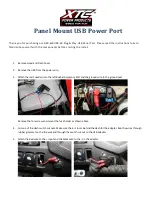
153
Fuel/emissions systems
Evaporative control system
The car is equipped with an evaporative control system, which prevents
gasoline vapor from being released into the atmosphere.
The system consists of a fuel tank with filler pipe and cap, two rollover
valves, a Fill Limit Vent Valve (FLVV), vapor vent lines, a charcoal
canister, a purge line, and a purge control valve and engine connections.
In addition, there is a pressure sensor connected to the fuel tank and a
filter-protected Canister Close Valve (CCV) on the atmospheric side of
the canister, for system diagnosis.
The gasoline vapor is channeled through the rollover valves and the
FLVV via the vapor vent lines into the charcoal canister, where it is
stored. When the engine is started, the gasoline vapor is drawn from the
charcoal canister to the engines air intake system and into the combus-
tion process.
NOTE:
•
Overfilling the fuel tank can cause damage to the evaporative control
system.
•
If the fuel filler cap is not closed tightly or if the engine is running
when the car is refueled, the Malfunction Indicator Lamp may
indicate a fault.
•
During a transitional period, a small number of service stations may
still have fuel nozzles that are not compatible with the fuel filler neck
on cars equipped with the evaporative emission control system
mandated by the U.S. Environmental Protection Agency and the
California Air Resources Board. If you experience difficulties in
refueling your vehicle, please ask the gas station attendant for
assistance.
CAUTION:
Fuel must not be siphoned from the fuel tank. This will damage the
evaporative emission control system.
Fuel system
The fuel system continually compensates for variation in engine load,
speed and temperature. A mass air flow sensor continuously measures
the inducted air and makes rapid adjustments for changes in air tempera-
ture and density, to balance fuel economy, emissions, and engine power
requirements.
Heated oxygen sensor
This is an emission control system designed to reduce emissions and
improve fuel economy. The heated oxygen sensor monitors the composi-
tion of the exhaust gases leaving the engine. The exhaust gas analysis is
fed into an electronic module. This adjusts the air/fuel ratio to improve
combustion and reduce the three major pollutants (hydrocarbons, carbon
monoxide, and oxides of nitrogen (NOx)) via a three-way catalytic
converter.
Crankcase ventilation
The engine is provided with positive crankcase ventilation which
prevents crankcase gases from being released into the atmosphere.
Instead, the crankcase gases are routed to the intake manifold and
cylinders.
PremAir®
On the surface of the radiator in the engine compartment, there is a
special coating called PremAir®. PremAir® works as a catalytic
converter, converting most of the ozone passing through the radiator into
oxygen, thereby reducing harmful ground-level ozone.
Summary of Contents for 2006 XC70
Page 1: ...2006 ...
Page 4: ......
Page 8: ......
Page 54: ...46 ...
Page 86: ...78 ...
Page 142: ...134 ...
Page 182: ...174 ...
Page 208: ...200 ...
Page 209: ...201 ...
Page 210: ...202 ...
















































